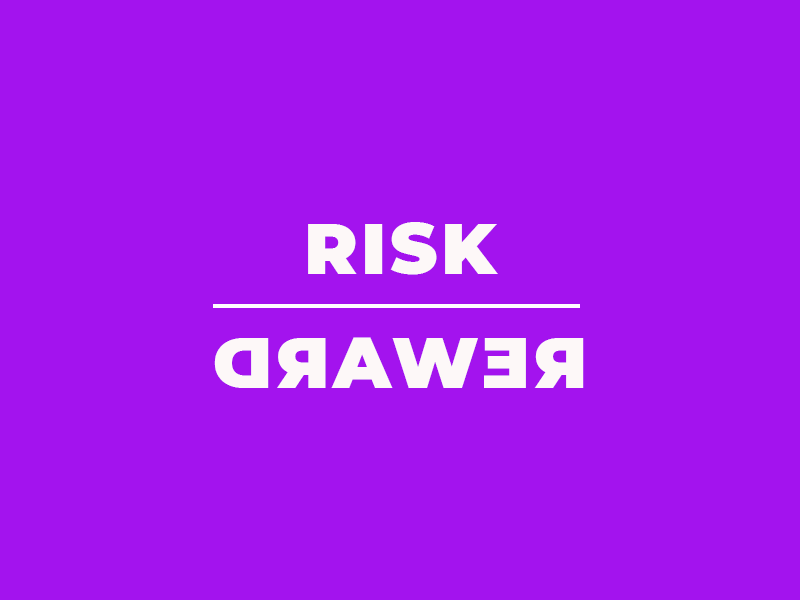I am generally a risk averse person…or at least I was up until about three years ago. Then I got serious about business, about running a studio, and about my need to work for myself. If you want a crash course in risk taking, the most direct route has to be by walking away from a secure job and hanging your entrepreneurship shingle out there for the world to see. If you’re considering working for yourself, plan on those decisions being a gateway to some of the most fear inspiring moments of your life.
Risk as Necessity
Risk is unfortunately, or fortunately depending on how you choose to look at it, part of becoming and being an entrepreneur. Risk takes you to the some of the highest points of apprehension and the lowest points of fear as you step completely outside your comfort zone on nothing more than a whim. Yet, when that risk results in success, it can be one of the most rewarding (and addicting) experiences you’ll come to know as a business owner.
Taking risks means opening yourself up to both success and failure. As I mentioned, when risk leads to success it can be close to intoxicating—failure, unfortunately, results in quite the opposite. But failure is a necessary part of the entrepreneurship process. You can’t have one without the other. And, in my experience, failure can provide the springboard to future success. Let’s look at a case”ish” study.
Entrepreneurship in Multiples
My first two attempts at starting a design studio were utter failures. My first studio, lovingly called Hybrid Studios, was going to be one part design studio, one part art house. I spent hundreds of hours planning things out in my head as to how this creative endeavor would be the ultimate career vehicle—the penultimate creative endeavor. I wrote out business plans, got a new shiny computer, designed logos and business cards for the business. I even went through the steps of renting a small, minimalist space in Portland, Oregon’s swanky Pearl area. It was where I would manage my creative take over of the world. I took the risk, and I was primed for success.
It took all of four weeks for me to realize something was drastically wrong. I had no clients, I had no leads, I had no idea what I was doing. You see, in all my planning there were some gross oversights on my part. Until that point I had been a creative in the trenches. I could design and write just about anything, but I had absolutely no idea about how to find people that needed what I had to offer. I also had no understanding about the business process and how marketing fit into this—again, I was a worker bee. I took for granted the fact that every studio I’d ever worked for had brought me the work. I had to do nothing except be creative. It was a big oversight on my part, and one that ended my “design studio” just about eight weeks after I began.
Risk takes you to some of the highest points of apprehension and the lowest points of fear as you step completely outside your comfort zone on nothing more than a whim.
My second attempt at starting a studio, this time lovingly dubbed We Draw, was the next evolution of what I’d envisioned Hybrid Studios to be. Again, I made plans and spent hours envisioning how amazing this new business would be. I leased a small space, this time closer to home in downtown Vancouver, Washington. I even had a couple of clients starting out. Risk, Set, Match.
We Draw, while perfectly successful in my mind, suffered from many of the same problems its predecessor had. Namely not enough work. While I knew more about how business worked and I had a few small clients going in, I hadn’t really taken the time to make a plan on how I would continue to get work in the long term. I didn’t, at that point, understand the value of building and leveraging a network—professional and personal. I had also not taken time to mentally examine how things worked in the previous studios I had been a part of. If I had understood those two areas better, I would not have had to close things down after four months—again with my tail between my legs and shades of depression setting in. Risk. Set. Failure.
Perceiving Failure as Reward
What did you see from those two examples? Believe it or not, the focus of that case study is not in the failure. Sure, failure was a big part of my previous endeavors, but so was risk. If I had not taken those chances I would have missed out on some important life and business lessons. Those times were painful personally, but they paved the way for our new studio, Shop, which was our (so far) success story.
You see, my third attempt incorporated a few drastic changes in how I set up things. I pulled from my two previous failures, focused on the things that would lead to longer term success (networking and partnership), and applied the same amount of risk. Starting a business is never easy, maintaining it is even harder, but as the horrible old adage goes, “You have to pay to play.” Without taking risks, there is no possibility of reward. So, brace yourself, hike up those knee socks, and take a risk. You never know how things might just turn out.
– – –
This article has been cross-posted on Medium. If you like it, do me a favor and head over there and give me a clap. It just might save the universe…or put a shekel or two in my pocket for coffee money.
 erin lynch vs. webclique.net | round 5
erin lynch vs. webclique.net | round 5